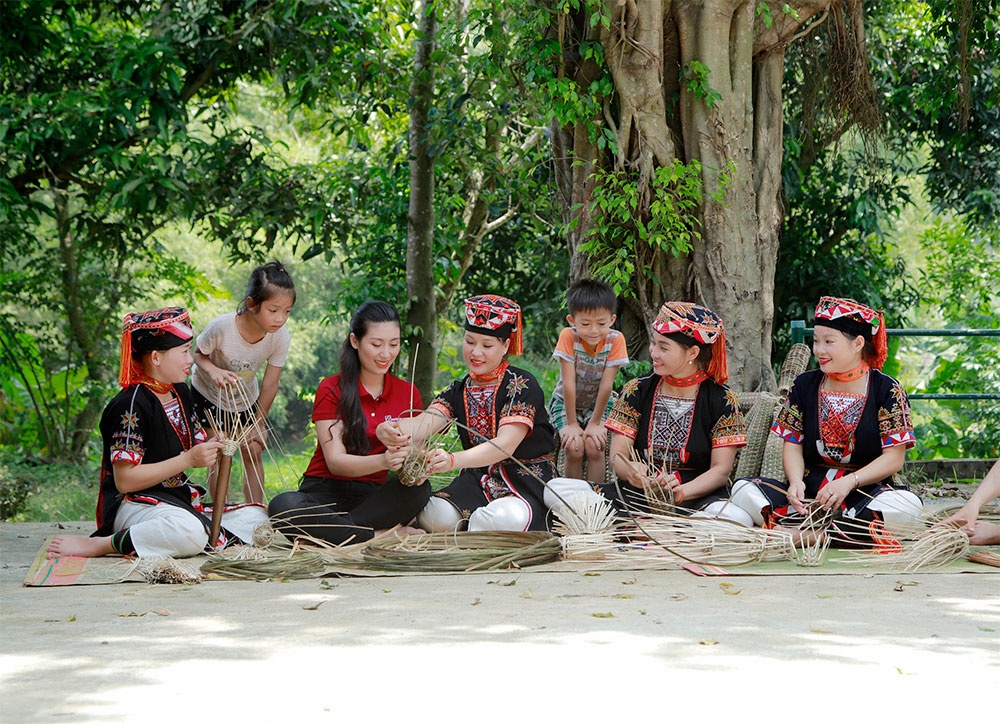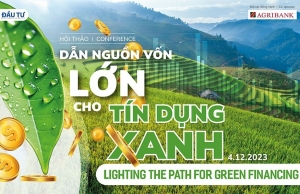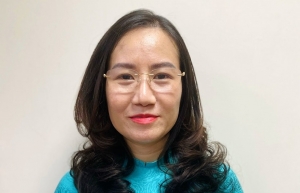Green credit gaining traction at Agribank
 |
| A series of new products have been developed based on Industry 4.0 |
In the National Strategy on Green Growth for this decade and beyond, green credit and green banking will play an important role. Deeply aware of the risks posed by a multitude of climate change challenges to the Vietnamese agriculture industry, Agribank is determined to lead the implementation of the State Bank of Vietnam’s directives on promoting green credit.
Determining the goal of building a green, circular, and environmentally friendly economy, Agribank has been focusing on prioritising capital sources, effectively expanding loans to projects, and developing production and business development programmes in agriculture and rural areas, especially programmes and projects that create added value, clean energy, and high-tech agriculture.
Agribank has participated in many projects related to environmental protection sponsored by the World Bank and international financial institutions. Since 2016, it has implemented an unlimited preferential credit programme with a minimum total amount of $2 billion for organic agriculture production for public health.
The lender has also lowered lending interest rates by up to 1.5 per cent per year for enterprises, cooperatives, unions of cooperatives, and farm owners participating in the production chain of safe and large-scale agricultural products.
Agribank’s outstanding loans to green projects have maintained steady growth year after year. Between 2018 and 2020, the green credit balance surged by an impressive 100-350 per cent annually. Although the growth rate of outstanding loans tapered off slightly after this period, it remained relatively stable in terms of both loan value and customer count.
As of June 2023, Agribank’s outstanding loans for green credit reached $493.9 million, of which the sustainable forestry sector accounted for 54.7 per cent of the total outstanding green credit loans, followed by renewable and clean energy at 22.6 per cent and green agriculture at 16.4 per cent.
As of the end of 2022, the lender was one of the credit institutions with the largest number of green loan customers. Among them, the sustainable forestry sector took the lead, making up 99.3 per cent of the total green customers (44,620 customers) and up 0.27 per cent against 2021 and 7.3 per cent against 2020.
This year, the green customer portfolio remains unchanged, but high-value loans are mainly granted to projects in renewable energy, including large-scale wind and solar projects.
Improving lending processes
As a result of Agribank’s capital allocation, many large-scale agricultural production models using cutting-edge technologies have taken shape nationwide, creating the agricultural production linkage chain and contributing to the creation of high-quality and high-value agricultural products.
These models have produced tangible results, including vegetable, flower, and fruit cultivation models in Lam Dong provinces, large rice fields in Can Tho city, livestock farming in Bac Ninh, Lao Cai, and Ha Nam provinces, investment in agriculture machinery and equipment in Tien Giang and Long An province, corn farming in Son La province, and the production of safe fruits and vegetables in the Central Highlands provinces of Dak Nong and Kon Tum. Additionally, there are projects for dragon fruit cultivation adhering to VietGap standards in Binh Thuan province.
Agribank has researched and developed two unique lending models. First is the group lending model. Accordingly, the bank has signed cooperation agreements with socio-political organisations such as the Women’s Union, Farmers’ Union, and Veterans’ Association in rural areas to disburse capital and promptly meet the financial and banking demands of individuals, removing bottlenecks for customers in accessing bank capital.
This initiative has unlocked credit flows into agriculture, farmers, and rural areas, improving living standards and bringing benefits to both customers and Agribank. As of June 30, it had provided loans to over 63,600 lending groups with 1.21 million customers. The outstanding loans reached $8 billion with a very low non-performing loan rate (0.5 per cent of the total outstanding loans).
Secondly, Agribank has launched vehicle transaction units in specialised vehicle mode since the end of 2017 to extend loans and provide banking services to production households and individuals in remote and rural areas, contributing to furthering commodity production and improving the income and living standards of the local people.
Vehicle transaction units have offered other services such as overseas remittance payments, payment account opening, card issuance, state budget contribution, and insurance selling.
 |
| Agribank’s capital allocations have produced results in agriculture in various localities |
Implementing ESG standards
Vietnam is in the process of completing the legal framework for environmental, social, and governance (ESG) criteria, so the definition and requirements for green banking and sustainable development evaluation remain vague.
However, Agribank’s board is deeply aware of the importance of developing banks in a green and sustainable direction. The adoption of ESG criteria has been identified as one of the bank’s leading sustainable development strategies in the current period, with a vision to 2030.
The lender has established a steering committee and supporting team to develop a comprehensive project for the ESG implementation at Agribank in the short and long term. A member of the Board of Directors acts as the head of the ESG Steering Committee, while other members are senior personnel.
The structure of the ESG Steering Committee indicates Agribank’s determination to implement ESG throughout the company system. In addition, it focuses on perfecting policies to promote green credit growth and manage environmental and social risks in credit-granting activities.
Agribank has issued internal documents on promoting green credit growth, guidance on environmental risk management in credit granting activities, and is implementing an action programme to sit alongside the national strategy for green growth towards 2030.
Along with that, it has effectively implemented internal and external communication on its policy of granting green capital to replicate safe agricultural production models, thereby changing consumers’ perceptions of the quality and safety of Vietnamese agricultural products towards sustainable agricultural production development. This helps the agriculture sector maintain the domestic consumer market while gaining a position in the global value chain.
In addition, Agribank focuses on developing a series of new products and services based on IT systems in line with Industry 4.0. Efforts are made to gradually digitalise banking activities and improve the quality and safety of e-banking services, while the bank has expanded the deployment of capital mobilisation products automatically on e-banking and online deposits on the e-mobile banking application.
Also being carried out is acceleration of solutions for opening and using online payment accounts using e-verification to meet customers’ online transaction demand; easing pressures on over-the-counter transactions; and reducing the large volume of paper used to print documents. At the same time, the bank not only diversifies products and services with the digital banking services, but also effectively deploys card services in agricultural and rural markets.
 | Green vision rises in finance-banking Experts are to shine a light on Vietnam’s efforts towards realising its committed green vision, particularly in the finance and banking sector. |
 | Central bank at the helm of shaping sustainable ambition With the requirement that socioeconomic development must go hand-in-hand with environmental protection and sustainable development, Vietnam is actively participating in international commitments on reducing greenhouse gas emissions and minimising the impact of climate change. |
What the stars mean:
★ Poor ★ ★ Promising ★★★ Good ★★★★ Very good ★★★★★ Exceptional
Related Contents
Latest News
More News
- Stock market starts 2026 with growth and governance in focus (January 06, 2026 | 08:45)
- Cake by VPBank posts strong gains in scale and efficiency leveraging AI focus (January 05, 2026 | 18:55)
- Banks step up listing plans in 2026 to strengthen capital and transparency (December 31, 2025 | 18:59)
- Ho Chi Minh City projects $10.5 billion remittance inflows in 2025 (December 31, 2025 | 18:58)
- New decree sharpens enforcement in securities market (December 31, 2025 | 18:53)
- Gold market reform advances as SBV receives applications for bullion production (December 30, 2025 | 12:07)
- EVN and AFD sign credit agreement for Vietnam’s first pumped storage hydropower plant (December 30, 2025 | 10:06)
- Techcombank Priority Visa Signature unlocks a higher standard of living (December 29, 2025 | 16:44)
- Tax sector wraps up 2025 and sets priorities for next year (December 25, 2025 | 14:00)
- A tipping point for digital and hybrid wealth management in Vietnam (December 23, 2025 | 13:33)

 Tag:
Tag:




















 Mobile Version
Mobile Version